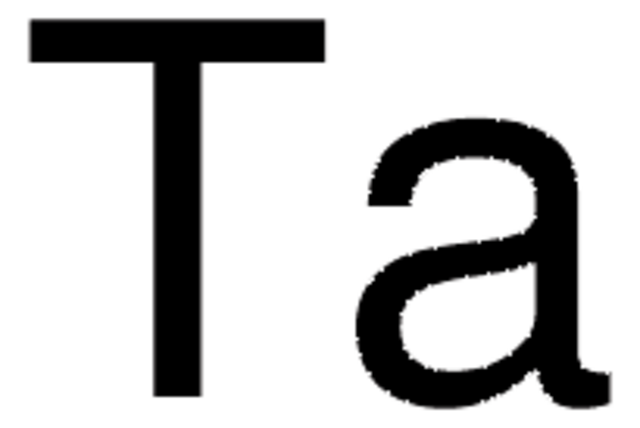419141
Zirconium
foil, thickness 0.1 mm, 99.98% trace metals basis
Synonym(s):
Zirconium element
About This Item
Recommended Products
Quality Level
Assay
99.98% trace metals basis
form
foil
resistivity
40 μΩ-cm, 20°C
thickness
0.1 mm
bp
4377 °C (lit.)
mp
1852 °C (lit.)
density
6.5 g/mL at 25 °C (lit.)
SMILES string
[Zr]
InChI
1S/Zr
InChI key
QCWXUUIWCKQGHC-UHFFFAOYSA-N
Looking for similar products? Visit Product Comparison Guide
Quantity
Storage Class Code
11 - Combustible Solids
WGK
nwg
Flash Point(F)
Not applicable
Flash Point(C)
Not applicable
Personal Protective Equipment
Regulatory Listings
Regulatory Listings are mainly provided for chemical products. Only limited information can be provided here for non-chemical products. No entry means none of the components are listed. It is the user’s obligation to ensure the safe and legal use of the product.
ISHL Indicated Name
Substances Subject to be Indicated Names
ISHL Notified Names
Substances Subject to be Notified Names
JAN Code
419141-13.8G:
419141-4.6G-PW:
419141-4.6G:
419141-VAR:
419141-1EA-PW:
419141-1EA:
419141-BULK:
Choose from one of the most recent versions:
Already Own This Product?
Find documentation for the products that you have recently purchased in the Document Library.
Customers Also Viewed
Articles
Can there be an effective strategy for finding breakthrough materials, since they are, by definition, unpredictable? One answer is found in Combinatorial Materials Science techniques, which represent a powerful approach to identifying new and unexpected materials.
Biomedical implants are essentially foreign substances within the human body that must survive many years’ exposure to demanding mechanical and physiological conditions. Despite these challenges, metal implants have been widely used to substitute for or rebuild hard tissues such as bones and teeth.
Our team of scientists has experience in all areas of research including Life Science, Material Science, Chemical Synthesis, Chromatography, Analytical and many others.
Contact Technical Service








